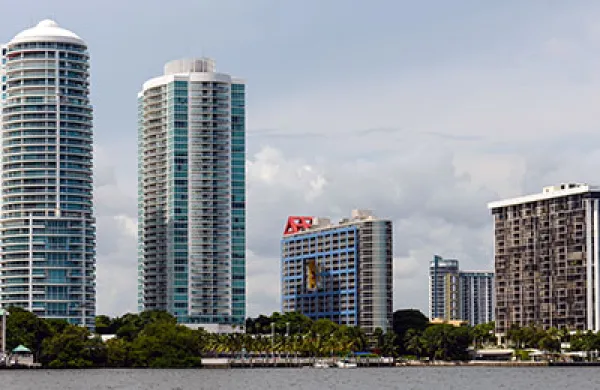Palm Beach County, Florida, is turning into a major player in spring training baseball, with a new, $150 million stadium in West Palm Beach scheduled to open for the Washington Nationals and Houston Astros next season.
That means the county will now host four teams for spring training, second only to Maricopa County, Arizona. The Miami Marlins and St. Louis Cardinals already train in Jupiter, 19 miles from West Palm Beach. The Nationals and Astros were previously based elsewhere in Florida. The Atlanta Braves are also considering moving to nearby Lake Worth from their present spring training facility in Kissimmee, near Orlando.
The stadium, the Ballpark of the Palm Beaches, is on track to generate more than $158 million a year for the West Palm Beach economy, according to a study by Tourism Economics for the Nationals and Astros. It estimates the project will generate $58 million in total personal income and more than 1,200 annualized full-time-equivalent jobs. The project is seen as generating $6 million in state and local taxes. Analysts say economic impact studies for stadiums should be taken with a large grain of salt, however.
“It’s another piece of the puzzle that enhances the experience of visiting Palm Beach County,” says Mark Vitner, senior economist at Wells Fargo in Charlotte, North Carolina. “By itself, the impact isn’t big. But when you couple it with all the other things to do, it’s a nice complement.”
The stadiums are financed by teams and municipalities that have an interest in getting the facilities built. It’s difficult to know, however, how much of the spending attributed to the stadium would have taken place without it.
Palm Beach County is financing the new stadium with $122 million in 30-year bonds: $65.4 million of it taxable and $56.6 million tax-exempt. The county plans to repay the debt with tourism taxes, $50 million from state sales taxes and lease payments from the teams. Moody’s Investors Service rates the bonds Aa1, while Fitch Ratings and Standard & Poor’s rate them AA-plus. All three agencies rate the county’s general obligation bonds triple-A.
As for tourism and hospitality dollars, in 2014 the Marlins’ and Cardinals’ spring training stays at Roger Dean Stadium, the facility in Jupiter, generated 23,000 hotel room nights just for players and team staff, says Glenn Jergensen, executive director of the Palm Beach County Tourist Development Council. Fans from St. Louis are particularly conspicuous, turning the stadium red with their Cardinals apparel during the March games.
Baseball in and of itself isn’t a sustainable driver of income from the stadium, though. Spring training lasts just two months: February and March. The new stadium can be used for minor league baseball and amateur baseball tournaments, as Roger Dean is now, Jergensen says. But those aren’t major moneymakers. County officials are considering other events too, such as concerts. And the stadium would be a possibility for the Olympics, if they are ever held in Miami, says William Stronge, professor of economics at Nova Southeastern University in Davie, Florida.
The stadium also may be important in keeping the Marlins and Cardinals in Jupiter, since it gives them two opponents conveniently just 20 minutes away. In recent years, several teams with spring training facilities in Florida have fled to Arizona, which a number of teams call home in the spring.
Aside from the rabid Cardinals fans, it’s unclear how many people spring training attracts. “It’s hard to argue that it’s the main draw,” says Stronge. “It adds to the experience of people here, and if you don’t have enhancements, you won’t get them. But it’s hard to tell which enhancements are critical.”
The stadium could give a small lift to the Palm Beach County real estate market, which is already sizzling, analysts say. “It can only be positive,” says Jeff Greene, a real estate investor who has bought about $300 million worth of property in West Palm Beach. The baseball complex will occupy 160 acres that were previously dormant, he notes. And the project may help entice more people to live here, Greene and others say, though the number won’t be large.
Plenty of housing surrounds the stadium, so there’s not much opportunity for new residential development in the area, says Neil Merin, chairman of NAI/Merin Hunter Codman, a commercial real estate services firm in West Palm Beach. Most of the commercial real estate in the area consists of warehouses, so that’s unlikely to benefit much. Given the short length of the spring training season, “you won’t see commercial real estate built just to serve the stadium,” Merin says.
In investor Greene’s eyes, the new stadium, along with the planned renovation of West Palm’s world-class Norton Museum of Art and the real estate boom, is “part of a bigger story — that West Palm Beach and Palm Beach County have arrived.”







